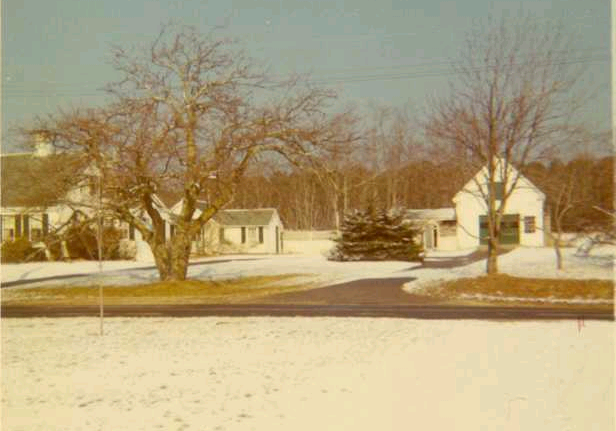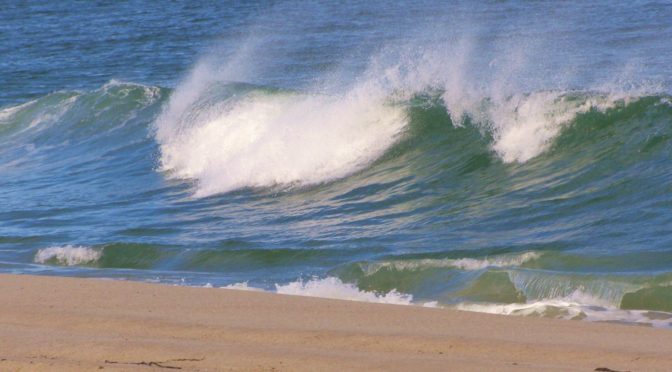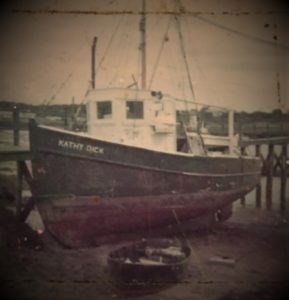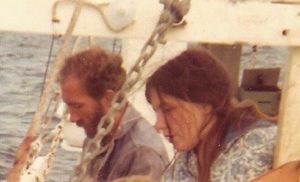Interview with Seth Chagi (World of Paleoanthropology): Additional Commentary
My early childhood home was a traditional New England-style house that was said to have been floated on barrels across Cape Cod Bay in 1780. It boggles the mind to consider how difficult it must have been to keep a very non-aero or hydrodynamically efficient two-story house on course as it made the voyage from Boston to Brewster. I’m sure the rafted structure was towed by a ship, but Holy Heck- that’s a lot of open water! If the wind blew up they might’ve become residents of a completely different town than the one where they had planned to reside.
Upon reaching the beach, they likely used teams of horses and large wooden rollers to bring the home to its final destination, where it still stands. The house was added-on to many times throughout the centuries and the property was made into a working farm. Oh, if only buildings could talk- the stories this house could tell! It was no longer a farm when my family lived there; just rambling old home on a narrow country road. My grandparents and various aunts and uncles lived with us at times, making it was a bright and lively place where we made many happy memories.
Cape Cod television reception was almost nil in those days, so we had to entertain ourselves the old-fashioned way- reading, crafts, playing music, and such. My parents probably thanked goodness that none of us was attempting to learn the bagpipes. Endless renditions of “I love coffee, I love tea” on the piano and “Mary had a little lamb” on the violin were bad enough! (My sister went on to become a very skilled violinist, eventually becoming 2nd violin with the Cape Cod Symphony.)
Some of my earliest memories were of walking in the woods with my father. He was an avid an outdoorsman; people sometimes said that if they ever fetched up on an uninhabited island and had to choose someone to take with them, they would pick him. Walking through any wild habitat with Dad was not at hurried process. We stopped and looked at things. He’d tell me all about them and what they could be used for. He taught me to observe, to listen; to watch the sky and the behavior of the animals around me. I also learned to look at the outdoors as nature’s grocery store. If you knew where to look and what you were looking at, you wouldn’t go hungry. (These days I find myself doing these same things with my grandchildren.)

I was an unusual child. I had friends but I often spent time on my own, just wandering the woodlands and marshes that surrounded our home and the nearby beaches. I knew the locations of several springs where I could get a refreshing drink anytime I was thirsty. I built crude little huts, using saplings and thick brush as the basis for my frame and weaving pieces deadwood throughout to make the walls. I often spent time gazing upon nature, mentally taking notes of observations that would later pepper my writings. Even as a youngster, I was already jotting down stories and drawing pictures to illustrate them. I also collected samples during my wanderings. My mother told me that when doing laundry, the pockets of my clothing often revealed unexpected surprises: rocks, pinecones, acorns, feathers, bugs, worms, and other fun finds enlivened an otherwise mundane laundry day.
I was nine or ten years old when I decided to make a tent of sorts from a tarp, using bits of rope, and clothespins, and using sharpened sticks for stakes. I erected this shabby structure on a bit of land just across the stream from our house, where it fit comfortably in a small clearing amid a stand of trees. I borrowed an unused strip of carpet for the floor. Over time, I gradually built up a decent camping kit. Eventually I was given an old but sturdy canvas tent that served me well until a sizeable family of mice set up housekeeping in it while it was packed away for the winter. In the spring I discovered my poor tent had a lot more ventilation than its original design intended. However, by then my afterschool job was paying enough that I could finally purchase a modern nylon tent. Little did I know, this perky blue and yellow 5′ x 7′ pup-tent, my backpack, and assemblage of camping gear would occasionally house and sustain me in the years when I was first out on my own. Rentals could be hard to come by and very expensive, so when I had no place to go, I lived in the woods.
I loved boondocking – that is – just camping in the woods, as opposed to in a campground. In fact, I’m not very fond of campgrounds but I will sometimes stay in them during the off-season. I was fortunate that we had no poisonous snakes or large predators and I could enjoy the wildlife without much concern. The worst thing I might run into was a skunk. Now that I’ve worked for an employer like Fish and Wildlife and seen gruesomely graphic photographs and read the reports of the aftermath of grizzly bear attacks, etc., I am much more aware of the potential hazards. Some folks don’t seem to mind tent camping in bear country, but having seen half-eaten remains, I would only do it in a hard-sided RV. Motivated bears can get into almost anything, but at least an RV gives you a chance to start up the engine and drive away and thus oblige them to run for their dinner.
And that’s it for this entry. I’ll be adding more blogs to go with the Story of Us! podcast.
Be sure to check out World of Paleoanthropology for interviews, articles, book reviews, and much more! It is a veritable goldmine of paleoanthropological information!
To learn more about Dreamer Books: An Ice Age Saga check out these pages!







